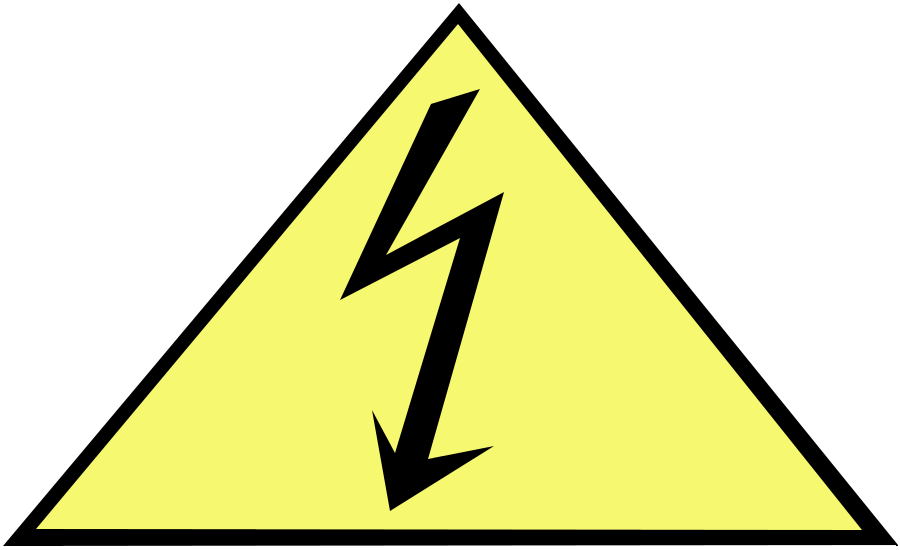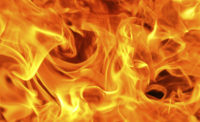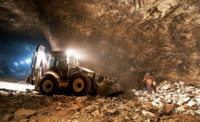Electrical safety

When it comes to electrical safety in today's workplace, there seems to be some misconceptions. For instance, many people believe that arc flash can only be hazardous when working with high voltage or voltage above 600v. Statistics, however, say otherwise.
One of the most important factors in determining your hazard is to identify the magnitude and duration of the fault current for a particular piece of equipment. The combination of the maximum fault current that is available during an arc flash incident and the duration of time that the arc can sustain itself is critical to the severity of the injury that may result.
Low voltage can burn
The Hazard Risk Category (HRC) table 130.7(C)(9)(a) in NFPA 70E-2004 “Standard for Electrical Safety in the Workplace,†describes very general tasks performed within certain voltage ranges. These voltage ranges begin below 240v. The next range is 240v to 600v. The HRC table was developed to show maximum exposures in a given situation while working within a voltage range.
Let’s examine the voltage range of 240v to 600v. There are several footnotes that are found along with the voltage range identification. Footnote 1 says that the exposure rating was derived for a maximum value of 25kA for the duration of 0.03 second (2 cycle) fault clearing time. Most commonly, this would be 480 volts three-phase equipment. The last job description found in this voltage range is “working while energized, including voltage testing.†NFPA 70E -2004 rates this job description as a 2*. This means that if an arc flash occurred while voltage testing a 480v three-phase piece of equipment your exposure would not exceed 8 cal/cm2.
A second-degree burn can be incurred by being exposed to as little as 1.2 cal/cm2. In the situation just described, the work performed was below 600v and, in the industry, is known as working low voltage.
NFPA 70E-2004 also states that any work performed above 50 volts, while energized, requires the proper use of personal protective equipment (PPE). This further emphasizes the dangers involved when working with low voltage.
Energized equipment
Another misconception is that most work is performed on de-energized equipment. The fact is, people work on energized equipment at some point everyday.
Lockout/tagout procedures have become a daily practice in the workplace. OSHA 1910.147 has been identified as one of the most critical aspects of implementing an electrical safety program. Misunder-standing comes from believing that if a workplace has a complete lockout/tagout program, then everyone is working on de-energized equipment at all times.
OSHA 1910.147 states the following:
1910.147(d)(2) Machine or equipment shutdown. The machine or equipment shall be turned off or shut down using the procedures established for the machine or equipment. An orderly shutdown must be utilized to avoid any additional or increased hazard(s) to employees as a result of the equipment stoppage.
1910.147(d)(6) Verification of isolation. Prior to starting work on machines or equipment that have been locked out or tagged out, the authorized employee shall verify that isolation and de-energization of the machine or equipment has been accomplished.
Locks and tags are placed and the equipment is then proven to be de-energized without the possibility of being accidentally re-energized. The process leading up to this point is considered — and must be treated as — working with energized equipment. Therefore, if you are performing a lockout/tagout procedure you must perform the work as though you are working on energized equipment.
Clothing characteristics
Other problems can occur by not selecting the proper PPE system for a given HRC category. NFPA 70E table 130.7(C)(11) Protective Clothing Characteristics, provides an exposure value for each hazard risk category. (This value is found in the far right column of the table and is in parenthesis.) The exposure values are as follows: HRC 1 = 4 cal/cm2, HRC 2 = 8 cal/cm2, HRC 3 = 25 cal/cm2, and HRC 4 = 40 cal/cm2.
These ratings are maximum exposures. They are not ranges. HRC 2 is not 8 cal/cm2 to 25 cal/cm2. This means that in an HRC 2 category the maximum exposure will be 8 cal/cm2. It would be correct to select clothing that has a value of 8 cal/cm2 or greater. In other words, you could wear a 40 cal/cm2 suit in an HRC 2 situation and meet the requirements, but it is not necessary. In fact, NFPA 70E suggests that the garment selected result in the least interference with the task but still provide the necessary protection (130.7(12)(f)). Fabrics on the market today offer cal/cm2 ratings of 8.2, for instance, while providing a lightweight and comfortable solution for HRC 2, allowing workers to meet the requirements of 130.7(12)(f).
The fit of the garment is also important. Garments should never be tight fitting. Loose-fitting garments offer additional thermal insulation due to the air spaces. Tight clothing will also restrict the movements of the worker.
Clearing up glove confusion
Understanding proper hand protection is extremely important when selecting your PPE. NFPA 70E address two hazards when discussing glove usage. Both shock protection and arc flash protection are taken into account.
It is easy to become confused when reading NFPA 70E section 130.7(C)(6), which states “Employees shall wear rubber insulating gloves where there is danger of hand and arm injury due to electric shock.†The section goes on to say that hand and arm protection shall be worn where there is a possible exposure to arc flash burn and then references section 130.7(C)(13)(c).
This section states “leather or FR gloves shall be worn where required for arc flash protection. Where insulated rubber gloves are used for shock protection, leather protectors shall be worn over the rubber gloves.â€
Many people would interpret this to mean that leather gloves, by themselves, are acceptable for working where an arc flash may occur. This also leads people to believe that if leather gloves, which offer no voltage protection at all, are acceptable then other gloves made of non-flammable textiles are also acceptable.
OSHA 1910.269 states that when working on or near 50 volts or greater, while energized, the use of voltage-rated gloves is required. NFPA 70E 130.7 (C)(9)(a) requires voltage-rated gloves for many of the tasks listed therein. While there are some tasks where voltage may not be present, most tasks with a possibility of an arc flash involve the presence of voltage.
Glove ratings
Because there is no recognized test method for determining the arc thermal protection value (ATPV) of any type of glove, NFPA 70E does not assign a cal/cm2 rating for voltage gloves and leather protectors. In 2002, 2003 and most recently in 2005, our company performed arc flash testing on both voltage-rated gloves and leather protectors. By using the existing ASTM F1958 test method procedures for determining ATPV values for garments, we were able to determine the approximate cal/cm2 rating for voltage-rated gloves and leather protectors.
Class 0 gloves with a leather protector had as much as a 56 cal/cm2 protection level. Class 2 gloves had as much as a 100 cal/cm2 protection level.
Due to this testing we now have a more accurate understanding of the arc flash protection of voltage gloves. The results of these tests make it easier for users to select hand protection today.
Your program
In summary, when implementing your NFPA 70E program, properly understanding the dangers of working on low voltage and the realities of working while energized are key components of identifying exposures that may result when performing various tasks. Understanding these exposures is vital to selecting the appropriate PPE to ensure that your workers are properly protected.
SIDEBAR: ATPV — Are you protected?
When selecting PPE, take into account the requirements for testing arc flash clothing. ASTM F1958 requires that fabric be given an ATPV or arc thermal protection value. ATPV is a protection value assigned to textile materials based on predicting second-degree burn injury based on the Stoll Curve. This means if a worker is involved in an 8 cal/cm2 arc flash while wearing an 8 cal/cm2 fabric, the worker has a 50 percent chance of receiving no more than a second-degree burn.
By wearing higher calorie rated clothing that exceeds the maximum exposure of an HRC category, you decrease the chances of receiving a second-degree burn.
For instance, if a worker wears an 11 cal/cm2 garment while performing a task that falls into HRC 2, and they are exposed to an arc flash during that task, they would be less likely to receive a second-degree burn than if they were wearing an 8 cal/cm2 garment during the same exposure.
Looking for a reprint of this article?
From high-res PDFs to custom plaques, order your copy today!







.jpg?t=1721257160)

